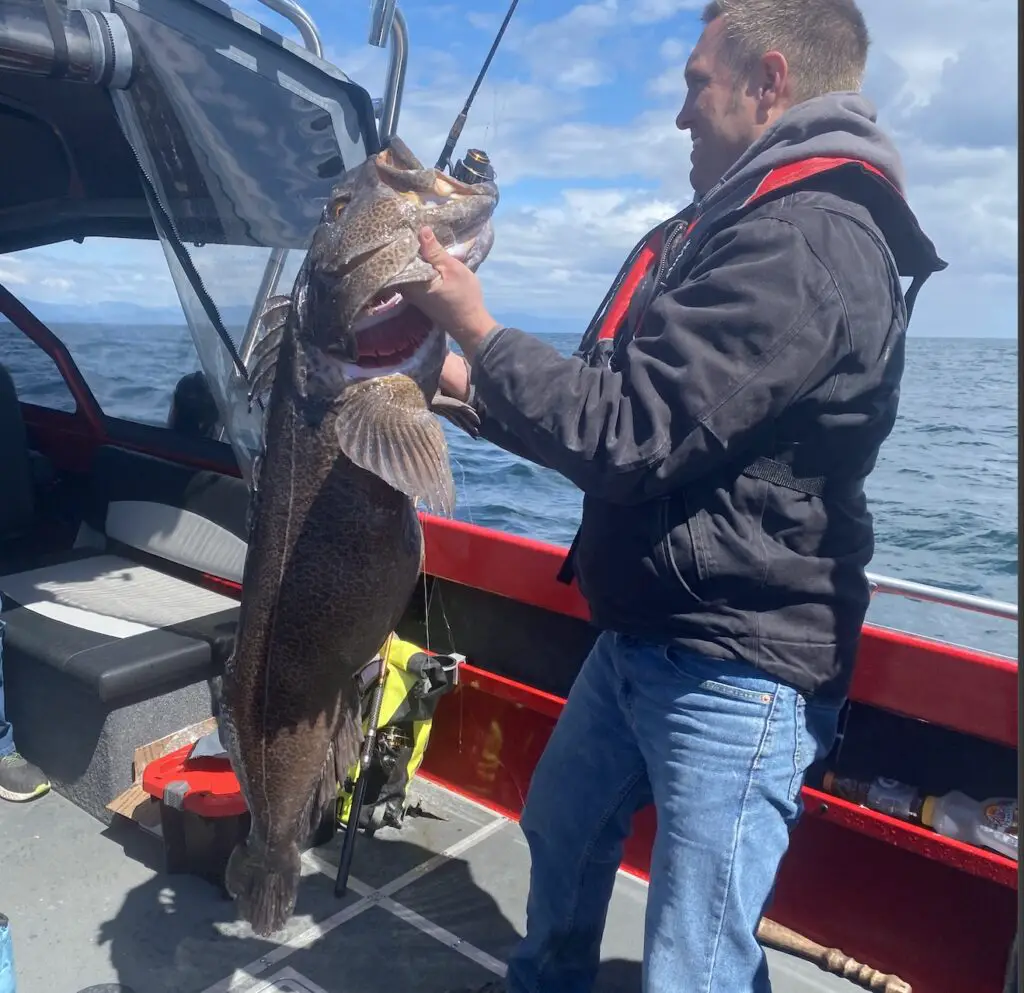
Lingcod are true monsters of the deep!
Rows of razor-sharp visible teeth pointing inward, a powerful muscular body designed with one purpose in mind: A short burst of speed and power to strike and stun their intended targets.
Getting bit by a sizable lingcod feels like a freight train with teeth hitting your line.
With all of these factors in mind, it’s not even the most fascinating and fearsome dynamic of their persona.
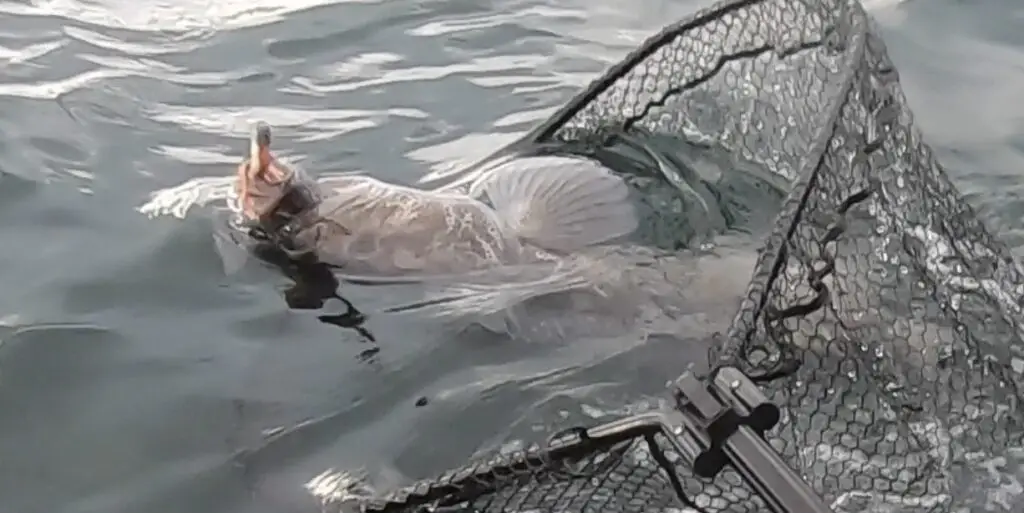
A lingcod bites and doesn’t let go.
Even to the point of holding onto a rockfish that you’ve hooked, all the way to the surface and in full view of the boat, often holding on long enough for you to net the completely unhooked lingcod sitting at the surface…
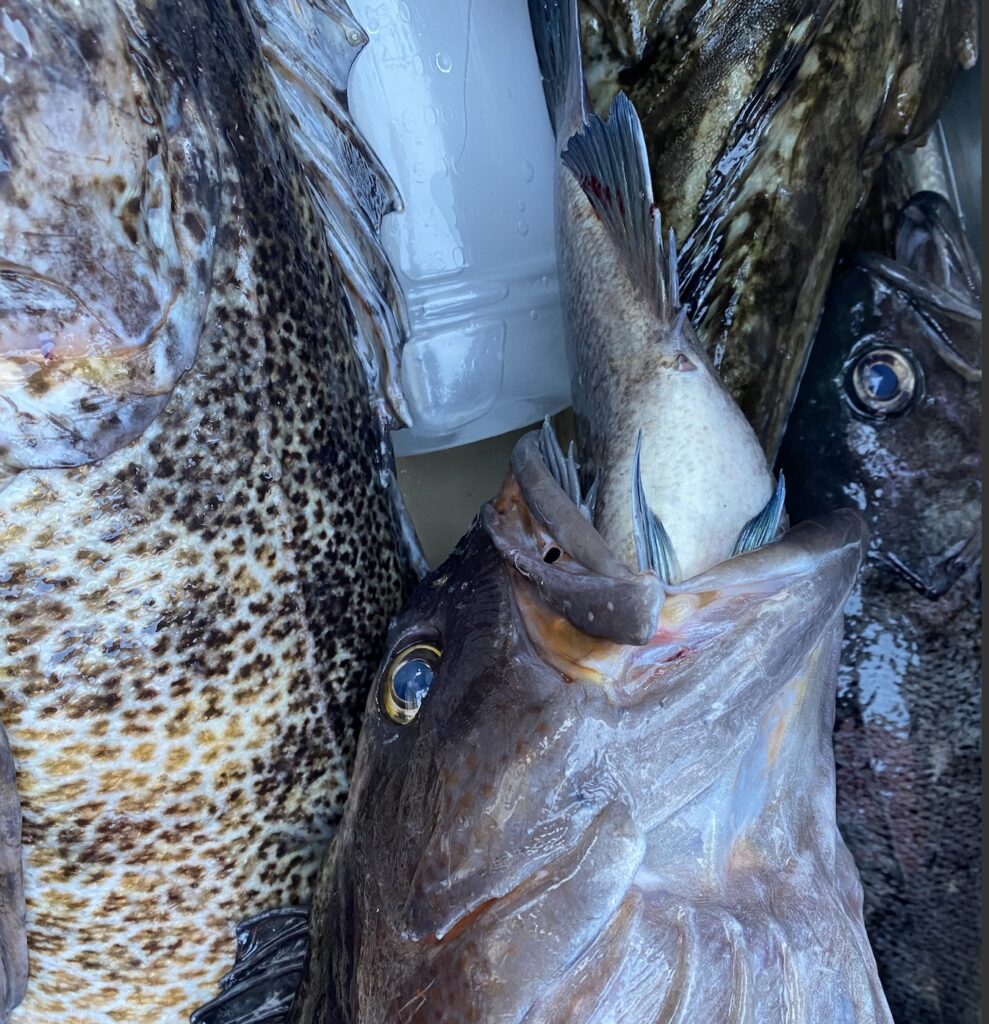
Additionally…how do you explain this picture?!
This happened in the catch box in the deck of my North River. There’s usually a little bit of water in that box, not a ton, but enough to wiggle around if you’re a lingcod.
How does a captive lingcod in the hold of a boat attempt to eat a black rockfish as it expires? What does that tell you about these creatures?
Could you image if they existed on land and got to any size?
Now, outside of the fascinating primal nature of these creatures, they are some of the most prized food fish in the entire PNW and are far easier and more accessible to catch than halibut.
Lingcod season is upon us and it’s the time to put some white fish into your freezer.
Recent blog posts about fishing for Lingcod
- Opportunities all 2025 in the PNW to hunt, fish and forage
- When to go Ocean bottomfishing in 2024
- Puget Sound Lingcod Fishing Season 2023
- Lingcod Fishing Neah Bay May 2022
- Rock fish and Lingcod fishing has been epic in 2022
Where to fish for Lingcod?
Finding Lingcod in the ocean can seem like a daunting task, but if you’re willing to do a little research with an app like Navionics or anything that gives you access to marine bathymetric charts, you can quickly narrow down where to fish for Lingcod.
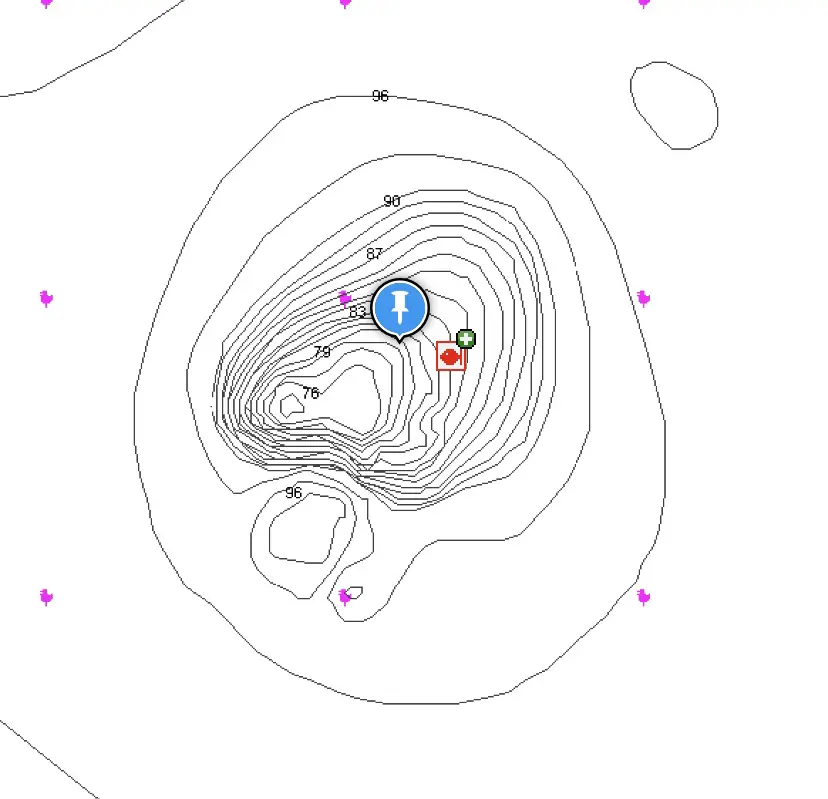
You are looking for something that looks like the above. Those close-together lines indicate sudden depth changes, in this case, a steep rise from the ocean floor that denotes rock piles, reefs, and other rocky structures.
You will typically find lingcod on or near the edges of these rock piles.
In terms of a boat strategy when fishing for lingcod, you want to figure out which way the current and wind are causing you to drift and position yourself so your boat is pointed in the direction you are headed (will happen naturally as you stop engines/shift to neutral).
Ideally, you want to position yourself to drift “downhill”, vs drifting uphill. If your drift causes the bottom to rise vs drop, you will find that your crew (especially if newer), will get hung up constantly.
You also want to position yourself such that you will spend the most time around the rock pile for the longest drift. I usually also use the reverse on the kicker motor to try and further slow down my drift so that it’s right around .5 knots.
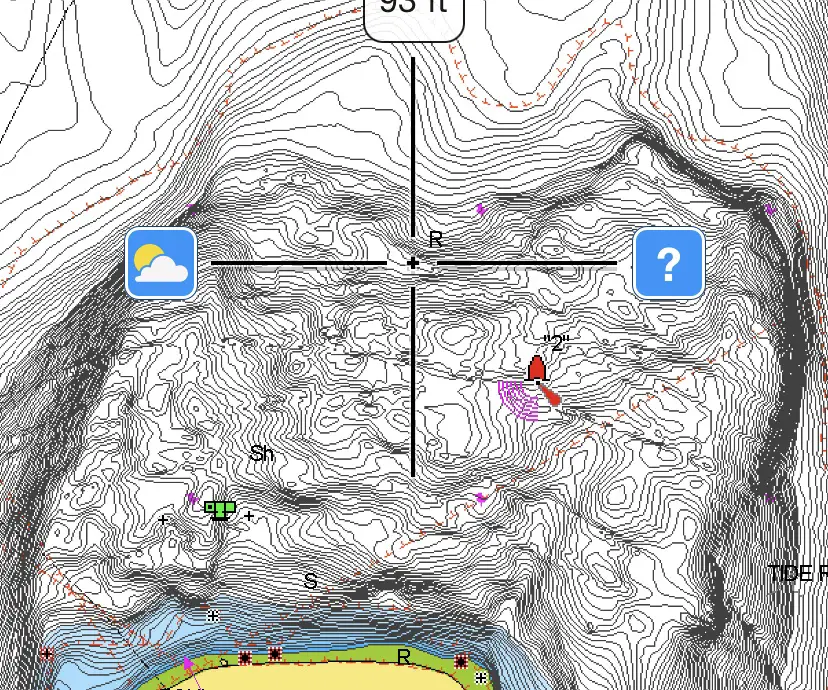
Any kind of large land outcropping or “point” will typically have a shallower “bar” that will have a rocky bottom that creates the perfect habitat for lingcod to spend time around.
These situations are usually found more in inland or inshore saltwater environments such as inlets, sounds, or around islands,
These locations can become dangerous on ebb tides for a variety of reasons. You can read all about marine weather safety here which I would strongly advise you to dig into.
Places to fish for Lingcod
There are many places throughout the west coast from California to Alaska and everything in between to fish for Lingcod.
Here’s a link to my favorite places which are lingcod fishing in Washington State. Places such as the Washington coast, Sekiu and Puget Sound are all described in that link.
How to catch Lingcod
Lingcod are fished for and caught on a wide variety of techniques and offerings from jigging plastics to live bait and everything in between.
Fishing bait for Lingcod
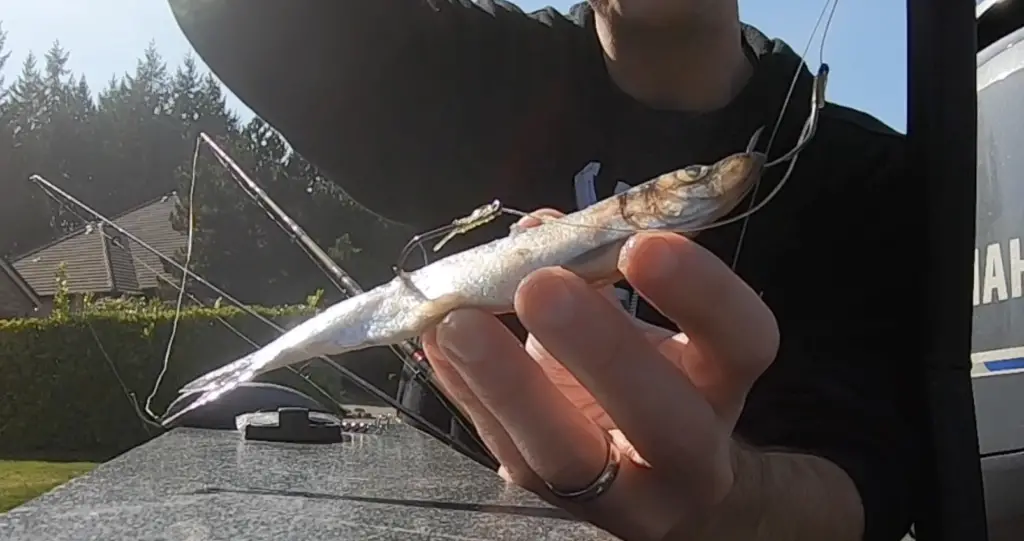
One of the most popular and simple methods to catch lingcod is to mooch herring for them.
You can use a 24-36″ leader of 50 lb mono tied in a double hook setup with a variety of hook sizes matched to the size of your herring, which could range from green on the smaller side to black label on the larger side.
With lingcod, given their aggressive and opportunistic feeding nature, you should generally think “big bait big fish”, but not always.
I’ve caught larger lingcod with a black label herring on the same drift I wasn’t getting bit at all with blue label herring.
As soon as we switched over to the big herring, we started getting bit.
I’ve also caught a 38 lb lingcod on a 4 oz jig so…
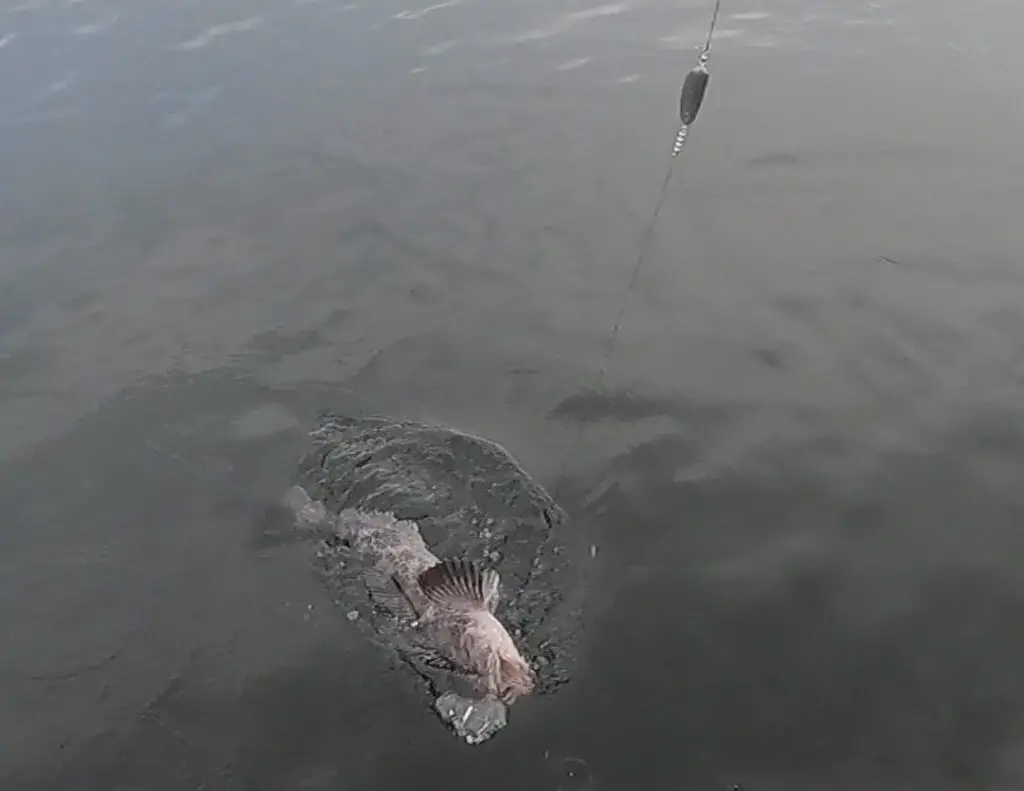
You can typically just fish these mooching rigs by dropping down to the bottom, reeling up 5-7 cranks nice and easy, and then dropping back down again.
The bite for lingcod while fishing bait can be a tricky one.
If you tied your mooching rig with a circle hook on the front hook you may need to really be patient with it and avoid the temptation to set the hook.
I will generally just keep reeling gradually even while it’s being attacked and when I think the lingcod is hooked, just reel faster. No need to set the hook.
I often will tie the back trailing hook, or the stinger as it is sometimes referred to with a sickle or J hook.
I’ve also seen folks wait a few seconds and then set the hook and have that succeed as well, it can vary greatly.
Regardless of your approach, make sure you have a plan and don’t set the hook until you’ve given it at least a few seconds and the lingcod is actively hitting the bait or the road is loaded up.
Fishing live bait for Lingcod

You can also fish with live bait for lingcod.
You can catch your live bait prior to fishing for lingcod or just rely on incidental catch and have a bait rod ready to go while fishing for lingcod and rockfish.
The challenge with attempting to fish for live bait prior to fishing for lingcod is that you may spend a good amount of time that you could be fishing for lingcod, looking for that live bait.
I’ve done trips like that when searching for kelp greenling a major favorite food of lingcod.
Flounder/Sand dabs are also good live bait and are typically far easier to catch.
Fishing for lingcod with these small flat fish is quite popular around Puget Sound and places like Possession Bar to target good-sized lingcod in a very competitive fishery.
I like to rely more on incidental catch of live bait, as you will typically hook some kelp greenlings while fishing for rockfish.
You should have a live well on your boat either built-in or a portable live well like the one below if you plan to make fishing live bait for lingcod a major part of your lingcod strategy.

Sometimes, when fishing for rockfish, you will hook a rockfish which incidentally becomes your “live bait” as a lingcod grabs it after it’s hooked.
These lingcods gain the name “hitchhikers” as they are never hooked, but will hold onto your rockfish often all the way to the surface.
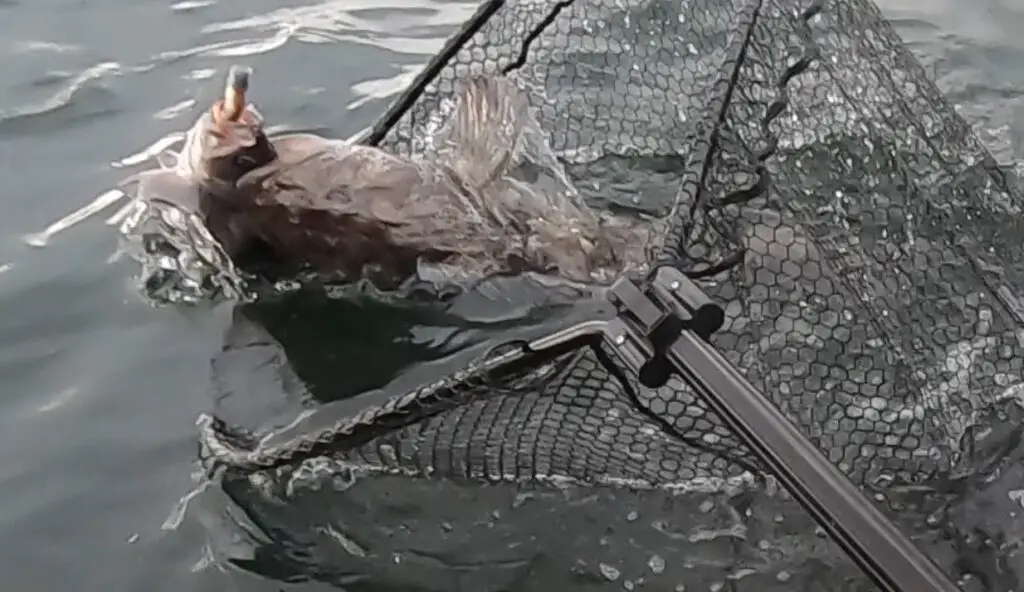
If you keep their heads in the water and don’t try to bring them to the boat too aggressively, you can often slide a net underneath them before they let go and swim away.
Truly, one of the most astounding behaviors, you would more associate with a shark than a game fish like lingcod.
Jigging for Lingcod

Fishing for lingcod with jigs and artificial lures is probably my favorite method.
Each method of fishing for lingcod has its advantages or unique fun factors, but using jigs with plastic worms/grubs just doesn’t get much simpler.
As I often write about related to fishing for bottom fish, you don’t need to use a jigging motion.
The currents typically provide enough wiggle on your plastics to keep them moving naturally, even something as stiff as a lancer jig.
Rapidly raising and lowering your rod just makes it harder for a lingcod to find and strike your lure. You may even be causing a lingcod to miss your jig as you jerk it up and out of their path.
We drop our jigs down until we hit bottom and then reel up a crank so that it’s within a foot or two from the bottom.
You then just hold your rod steady, perhaps dropping again at times to find the bottom depending on what kind of slope you are fishing.
When a lingcod hits your jig, you will know!
This 38 lb lingcod bit a 4 oz lancer jig using exactly the methods discussed on this page!
Surf rig and dropper for Lingcod
Yes, this is for beach fishing, but this is a great way to target bottom fish and not lose gear.
I’ve just started to fish this way for lingcod in shallow water as it’s been hugely successful for me with rockfish. The big advantage to fishing a rig like this is that the part that touches bottom is the dropper weight, which can be cannonball lead or any other heavy cheap material.
When the part that touches bottom doesn’t have a hook on it you will lose far less gear, which keeps your gear in the water and increases the odds and efficiency of hooking quality lingcod.
Fishing for Deepwater Lingcod
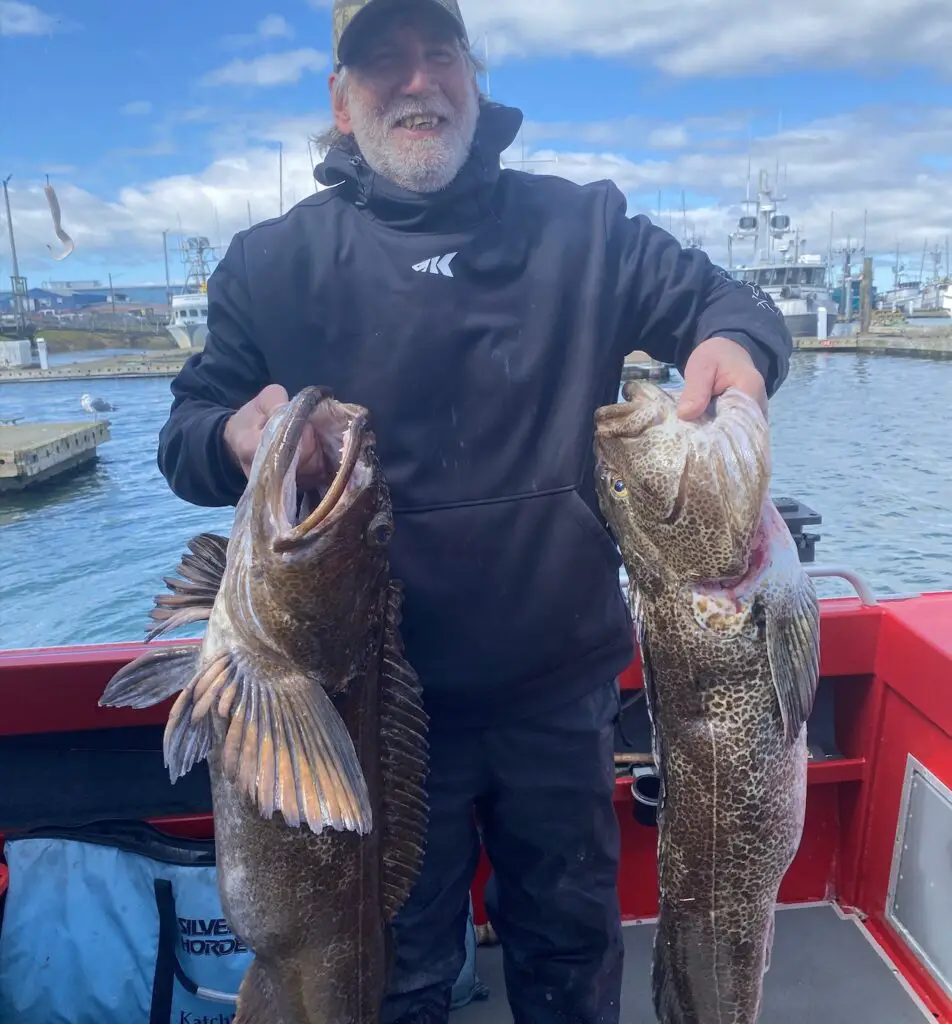
Off the coast of Washington and the interior Puget Sound, there are depth restrictions that limit how deep of water you can fish for lingcod, but later in the season, these restrictions are relaxed in certain marine areas.
Fishing for deeper water lingcod requires some slight changes in tactics and some changes in gear.
Lingcod are often hooked while fishing for halibut in deeper water, say 300 ft or deeper on the same gear.
More glow offerings / using colors still visible at lower light levels, use of scent/chunks of bait, and much heavier weight are usually all factors when fishing deeper water lingcod.
Fishing Pipe Jigs for deepwater Lingcod
Pipe jigs are a popular approach for deep-water fishing for halibut, lingcod, and true cod. heavyweight and density of the pipe jig will make it easy to drop all the way down at a decent line angle, hitting the bottom with a loud thud that will attract predator fish like lingcod.
When fishing deepwater lingcod, it becomes more important to use sound to attract your target. This means using that jigging motion to crash the jig into the bottom regularly which may imitate a dying fish struggling and coming back down to rest.
Rigging up for Lingcod
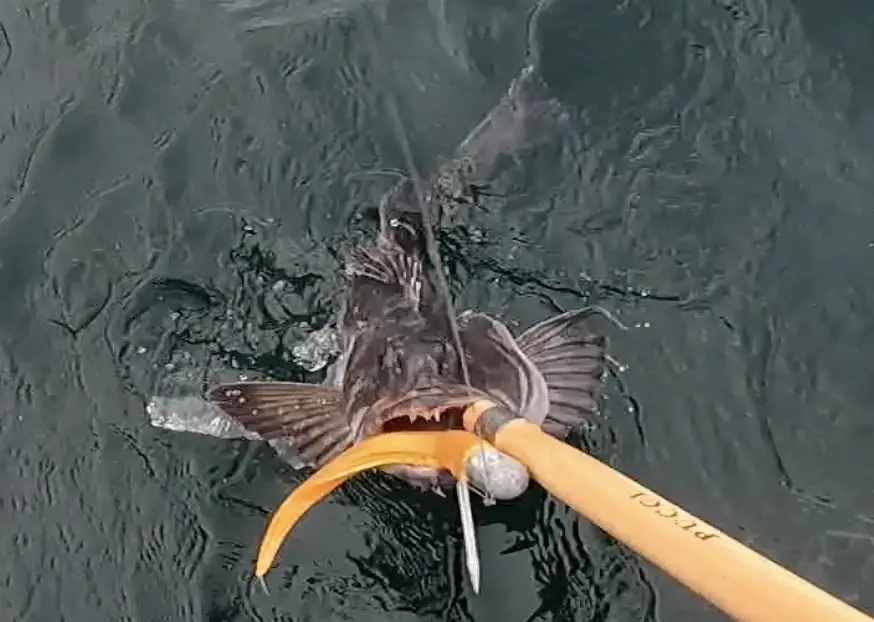
Lingcod can routinely grow to 20 – 40 lbs, with some fish achieving much greater sizes. Couple that with needing heavy leader material that won’t get sawed off by their massive sharp teeth combined with often deep and rocky habitats they are found in, which requires a much heavier approach to fishing rods, reels, and mainline.
A lingcod is not known for putting up a great fight. They will slam an offering as hard as any fish I’ve experienced, but after that, they often just hold on and try to outmuscle their prey back down to their rocky lair.
A nice lingcod will load up a heavy rod, but you won’t get the blistering runs or aerial show that are frequent with salmon.
I use an Ugly Stick Tiger by Shakespeare. It’s a 7’0 medium heavy rod rated for 30-60 lb test and 1-8 oz lure weight.
I pair the above rod with the Offshore Angler’s Gold Cup Levelwind Reel – GCP30. If you’re looking to pickup both on Amazon, I couldn’t find the exact match…
I fill up the reel with the 80 lb braid.
I generally use the same type of rod, reel, and mainline for both halibut and lingcod. There’s no reward to going for a finesse approach with these fish.
Note: When you use this setup and this heavy braided line, you will not be able to merely break off when you snag up on the bottom by jamming your thumb in the reel.
You also can expect that most things you choose to wrap the braid around to attempt to break the line will also break, including body parts…(don’t do this, please!).
Instead, to break off / or pull up off of a snag, wrap the line around a nearby boat cleat until it stops pulling the line from your reel.
It will either break your line or pull it out of whatever it’s stuck on and won’t injure you.
Descending device for rockfish
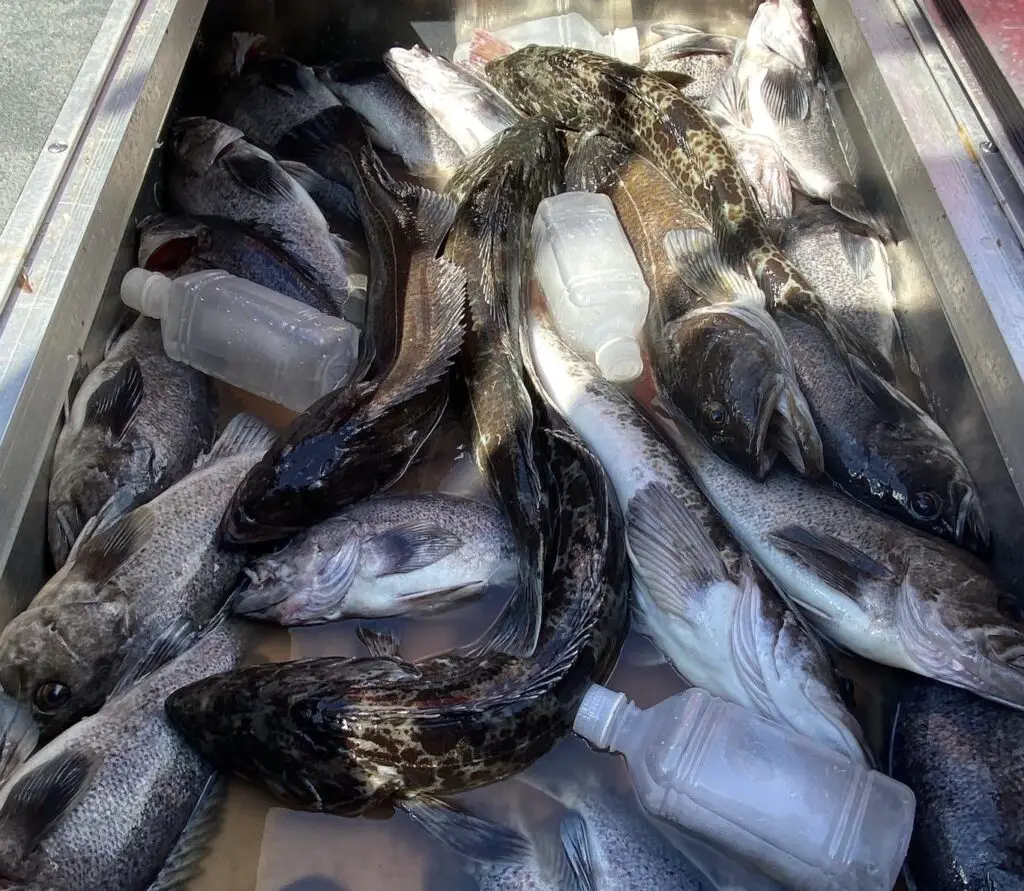
You don’t need a descending device for lingcod, but it’s often a legal requirement to fish for bottom fish as you will encounter rockfish while fishing for lingcod and these need to be safely returned to the depths.
You need to have a descending device rigged up and ready to go.
They make a variety of descending devices that you can attach to your downrigger or to a spare fishing rod. After doing both, I will say the spare fishing rod is the way to go…I had the more elaborate and expensive downrigger option, but after losing a downrigger ball during the release process, I’m kind of over that.

It’s a big lead weight with a cheap descending device like the one above, on a spare rod for me.
Also, if you think you can get away with just whacking them with a gaff until they decide to go down…
First of all, it’s illegal to fish for bottom fish in Washington (and maybe other places?) without a descending device ready to go on your boat, second of all, you can waste a lot of time trying to coax a rockfish back down without a descending device.
If you’re like me and you don’t like to waste a resource like a rockfish and that floater will bother you, you’re gonna waste a ton of time poking at it with the gaff vs just using the descending device to get that rockfish back down to the depths and move on with your life and get back to lingcod fishing.
Fillet knife for Lingcod processing
There are many good resources on Lingcod fillet technique and approach, but one thing you will want to do is take the skin off. Taking the skin off of a lingcod fillet requires an extremely sharp knife and some good technique.

Black Titanium Nitride Coated – High Carbon 7CR17MOV-X Vacuum Treated Steel – Meat, Boning Knife – Sheath – NSF Certified
The above knife is probably my absolute favorite for many fillet jobs, but especially for bottom fish like rockfish and lingcod.
I will get enough skin separate from the fillet that allows me to grab a hold of the skin and pull it through the knife which I will hold largely flat with a slight tilt towards the skin to make sure I’m not going through much if any meat.